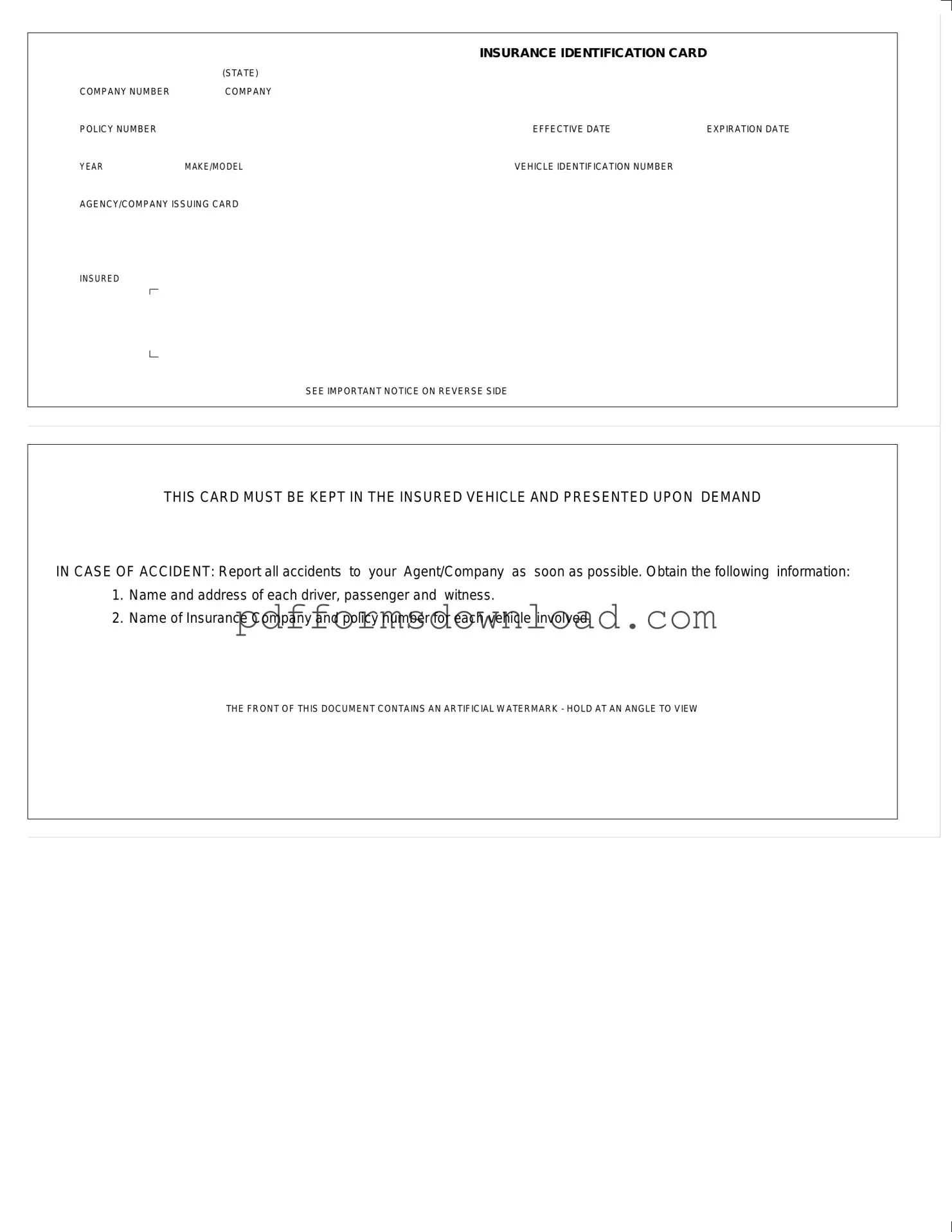What is an Auto Insurance Card?
An Auto Insurance Card is a document that proves you have insurance coverage for your vehicle. It contains essential information such as your insurance company’s name, policy number, and the effective dates of your coverage. This card is crucial for legal and financial protection in the event of an accident.
Why do I need to keep the Auto Insurance Card in my vehicle?
Keeping the Auto Insurance Card in your vehicle is a legal requirement in most states. It serves as proof of insurance when requested by law enforcement or in the event of an accident. Failing to present this card when required could lead to penalties, including fines or a suspension of your driving privileges.
What information is included on the Auto Insurance Card?
The Auto Insurance Card includes several important details: the name of your insurance company, your policy number, the effective and expiration dates of your coverage, the make and model of your vehicle, and the vehicle identification number (VIN). This information helps verify that your insurance is active and valid.
What should I do if I lose my Auto Insurance Card?
If you lose your Auto Insurance Card, contact your insurance company immediately. They can provide you with a replacement card, often at no additional cost. It’s important to have this card on hand to avoid any legal issues while driving.
What steps should I take if I am involved in an accident?
In the event of an accident, first ensure everyone's safety and call emergency services if necessary. Then, gather important information: the names and addresses of all drivers, passengers, and witnesses, as well as the insurance details of all vehicles involved. Report the accident to your insurance agent or company as soon as possible to initiate the claims process.
What is the importance of the watermark on the Auto Insurance Card?
The front of the Auto Insurance Card features an artificial watermark, which helps prevent fraud. To view the watermark, hold the card at an angle. This security feature assures both you and law enforcement that the card is legitimate and has not been tampered with.
What happens if my Auto Insurance Card expires?
Using an expired Auto Insurance Card can lead to serious consequences, including fines or legal trouble. Always ensure that you have an up-to-date card in your vehicle. If your policy is renewed, your insurance company will issue a new card reflecting the updated dates. Be proactive about replacing your card to avoid any lapse in coverage.
